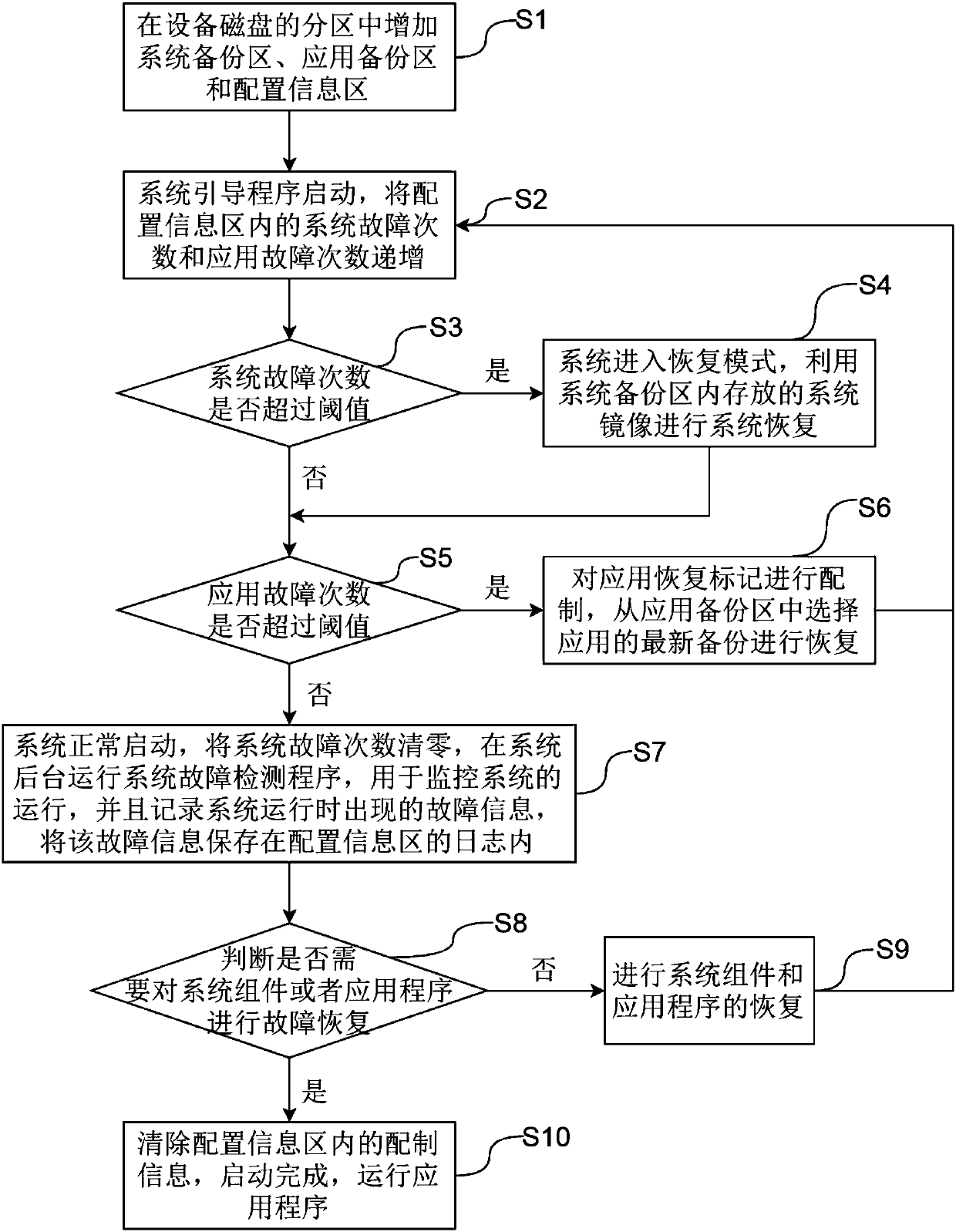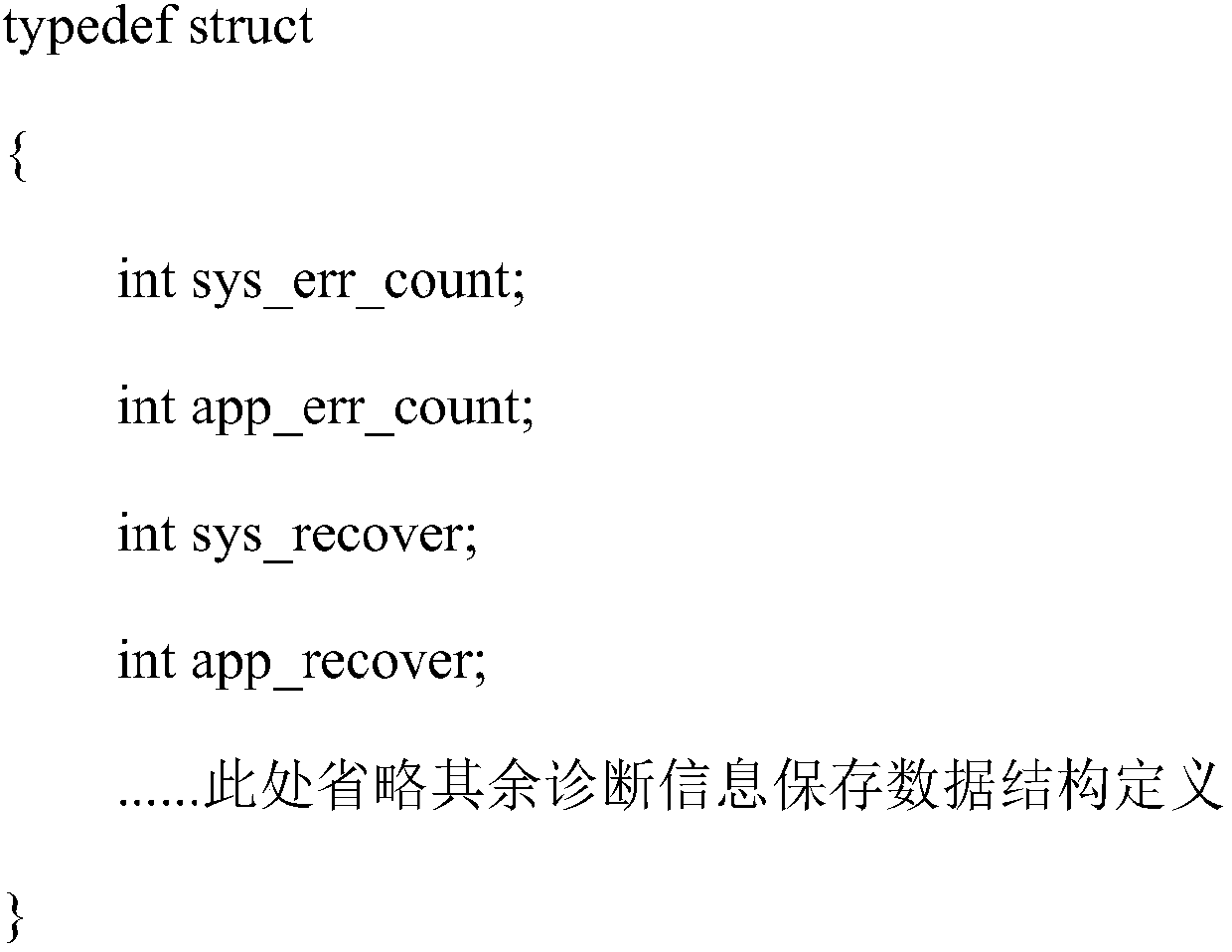Embedded system fault self-recovery method, terminal equipment and storage medium
A technology for embedded systems and system failures. The redundancy in hardware is used for data error detection, instrumentation, and error detection/correction. It can solve problems such as affecting users' use, file loss, and abnormality, and ensure long-term sustainability. running effect
- Summary
- Abstract
- Description
- Claims
- Application Information
AI Technical Summary
Problems solved by technology
Method used
Image
Examples
Embodiment 1
[0028] Embodiment 1 of the present invention provides an embedded system fault self-recovery method, such as figure 1 As shown, it is a schematic flow chart of the embedded system fault self-recovery method described in Embodiment 1 of the present invention, and the method may include the following steps:
[0029] S1: Add a system backup area, an application backup area, and a configuration information area in the partition of the device disk. The system backup area is used to save a complete system image, which can ensure the normal operation of the system after reburning. The application backup area is used to save all historical versions of the application installed on the device. When the application fails, the most recently installed historical version is used to restore the application, which can ensure that the application is the version before the failure. The content of the configuration information area includes log and configuration information, used to guide the pr...
Embodiment 2
[0050] The present invention also provides an embedded system fault self-recovery terminal device, including a memory, a processor, and a computer program stored in the memory and operable on the processor, when the processor executes the computer program The steps in the above method embodiment of Embodiment 1 of the present invention are implemented.
PUM
 Login to View More
Login to View More Abstract
Description
Claims
Application Information
 Login to View More
Login to View More - R&D
- Intellectual Property
- Life Sciences
- Materials
- Tech Scout
- Unparalleled Data Quality
- Higher Quality Content
- 60% Fewer Hallucinations
Browse by: Latest US Patents, China's latest patents, Technical Efficacy Thesaurus, Application Domain, Technology Topic, Popular Technical Reports.
© 2025 PatSnap. All rights reserved.Legal|Privacy policy|Modern Slavery Act Transparency Statement|Sitemap|About US| Contact US: help@patsnap.com


